Reading Time: 11 minutes
India isn’t just a country – it may as well be a continent. It’s unique in its diversity, offering a perfect mix of chaos and calm. By going fishing in India, you’re signing up for more than just a cast. Here, you have the potential of wrestling with true beasts of the deep in waters as varied and exhilarating as the land itself.
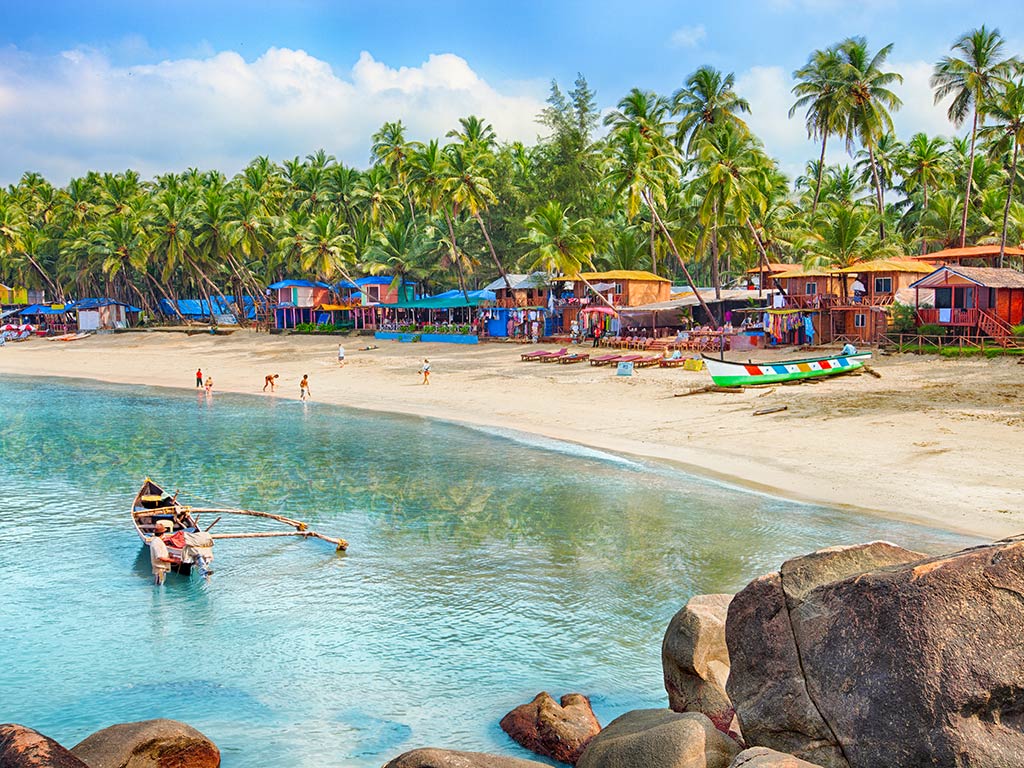
The sheer breadth of India’s fishing grounds is more than impressive. Picture gorgeous rivers that cascade from the peaks of the north through valleys and forests before mixing with the Indian Ocean. Imagine the thrill of fishing in the shadow of ancient palaces in Rajasthan. Or let your mind wander to the serenity of Kerala, where time stands still. And that’s not even the start of it!
In this guide, we’ll talk about prized catches and where to find them. You’ll get the scoop on the best spots across the country’s 7,517 km (4,670-mile) coastline, along with and freshwater streams and lakes. We’ll also let you in on some local techniques along with the different fishing seasons. All this, wrapped up with insights on gear and conservation, will help you experience the fishing trip of a lifetime in India. Grab your gear and let’s dive in!
Top India Fish Species
Whether you’re a beginner or a pro, there’s a fish calling your name in India. The waters are home to everything you could ever imagine, from familiar game species on your bucket list to something exceptionally exotic. Let’s unpack India’s top fish species:
Mahseer
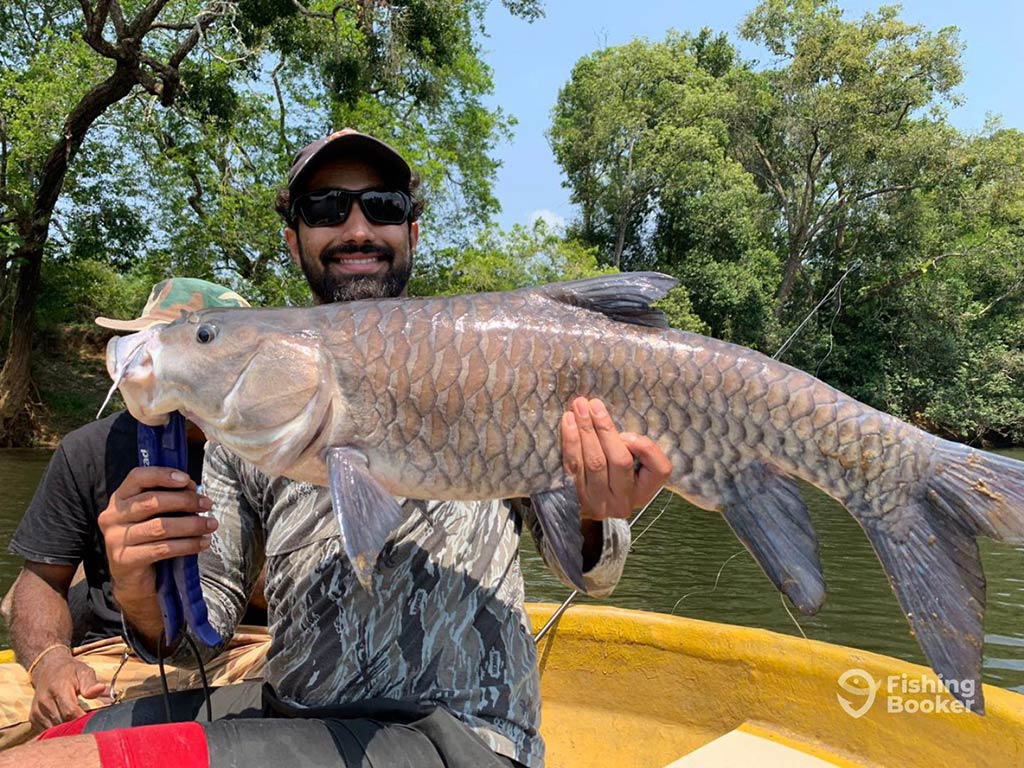
Photo courtesy of Greenwood Brothers
Mahseer are the stuff of legends when it comes to fishing in India. They’re held in high esteem among local anglers as the country’s premier freshwater game fish. It’s not only about size, though – which can easily exceed 50 pounds. Mahseer inhabit the fast-flowing, oxygen-rich waters of the Himalayan rivers and promise to test your patience, skill, and equipment like no other species.
These beasts react well to live bait, such as small fish or crab, although you can also use spoons and spinners, or try fly fishing. There’s a catch-and-release culture to preserve the species. So, when the season allows – between October and May – hire a local guide and head out to earn your bragging rights!
Barramundi
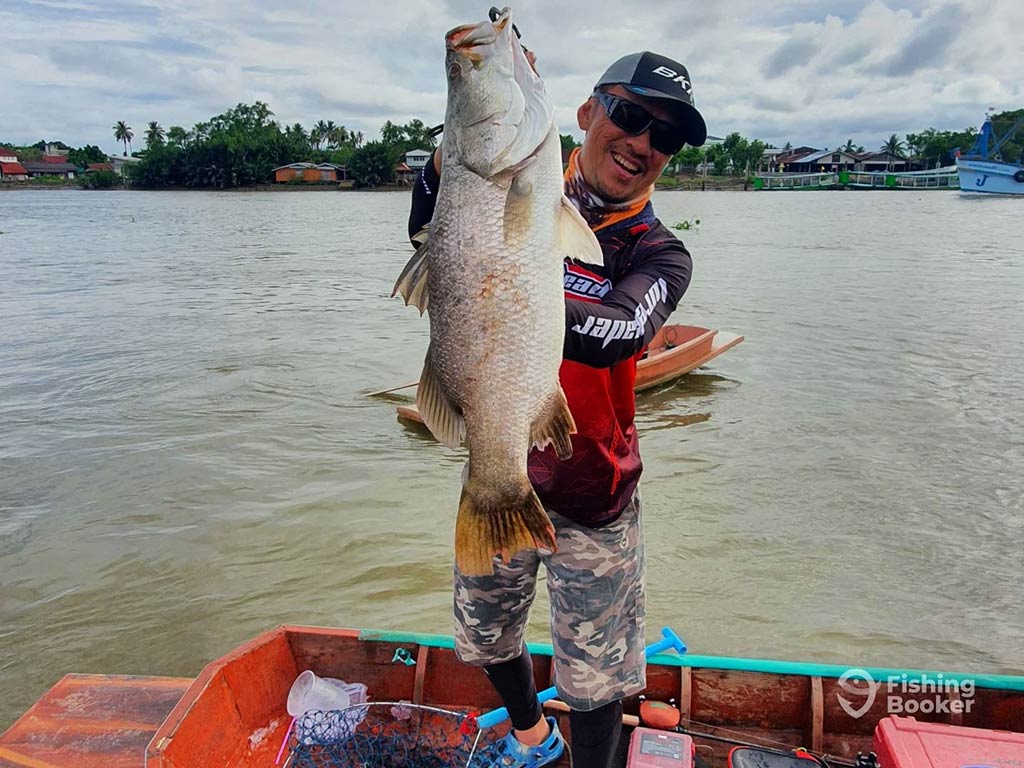
Photo courtesy of BKK Fishing Tour – Wild Barramundi Fishing
Barramundi – or Asian Seabass – strike a chord with anglers due to their ferocious fights. They patrol the tidal waters of India’s estuaries and mangroves, along with freshwater lakes and rivers. An average Barramundi will weigh around 15 pounds, but trophies can exceed 45 pounds!
The techniques for landing a Barramundi vary depending on where you find them. Mullet or shrimp can be very effective in estuaries, while lures work well in both riverine and coastal scenarios. However, night fishing in cooler waters can result in pretty large Asian Seabass catches too!
Spots like the Goan coasts, Kerala’s backwaters, and the Mahanadi in Odisha are well-known Barramundi territories. The fish are particularly active during the monsoon and post-monsoon months, peaking from September to December.
Rohu
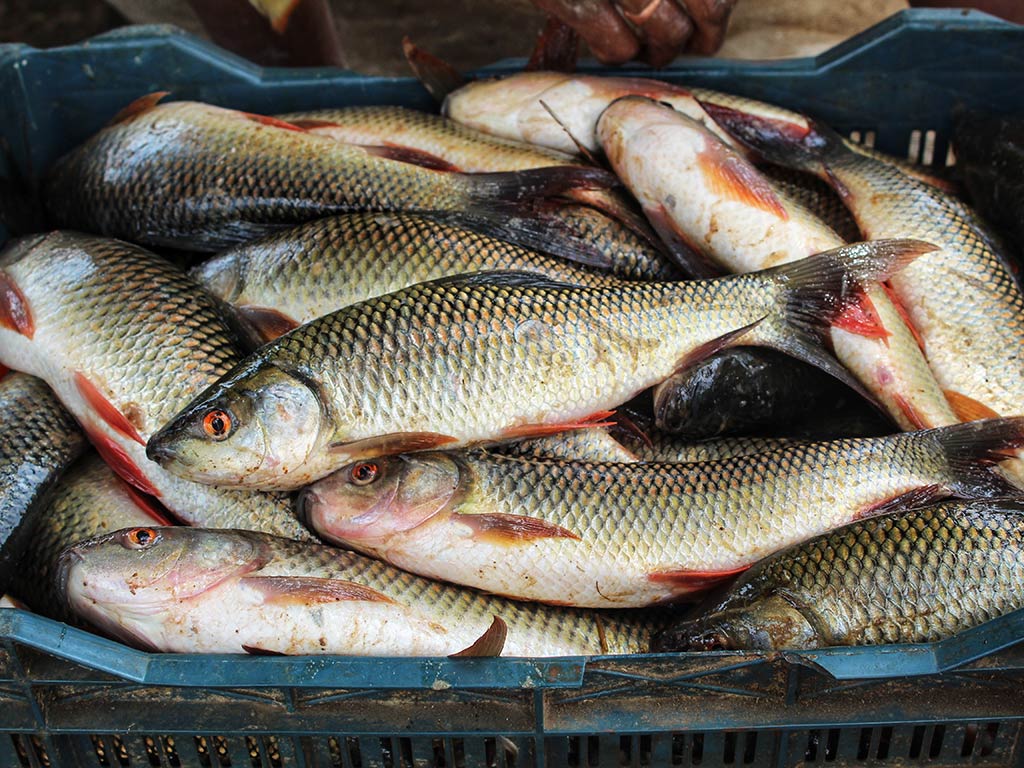
Rohu – aka Carp – are among the top catches in the Gangetic basin. It’s an essential species not just for sport but also for sustenance. An average adult Rohu weighs around 6 pounds, although they can grow up to 100 pounds in ideal conditions.
These fish are bottom feeders, popular in the calm waters of Ujani Dam, Pong Reservoir, and the Krishna River. However, in early morning or late afternoon, especially in warmer months, they feed close to the surface. Locals try to lure them with dough, boiled grains, or insects. If you’re up for a challenge, try a traditional method of landing Rohu called “match fishing” – using fine tackle and ground bait.
Indian Salmon
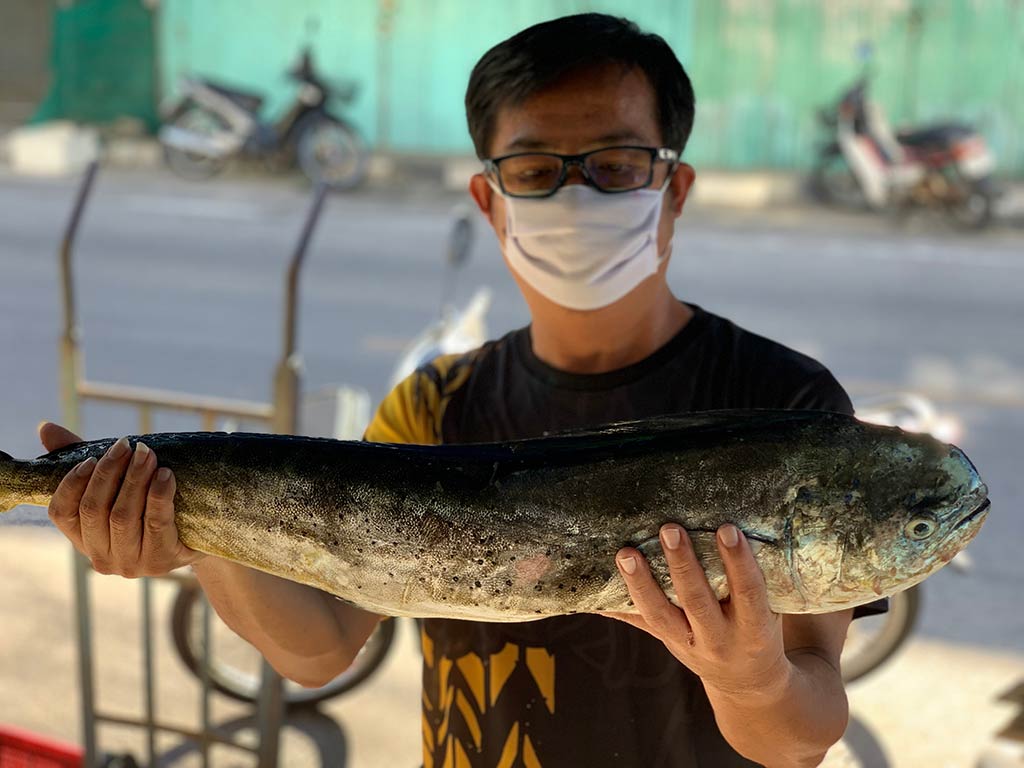
Indian Salmon are locally referred to as Rawas, a prize catch renowned for both fight and flavor. These exciting and delicious fish are usually found off the west coast of India, with sizes ranging from a modest 4 pounds to a more impressive 65+ pounds.
The technique for catching Indian Salmon often involves trolling with deep-diving plugs or bait fishing with live sardines and mackerel. Peak seasons correspond with their pre-spawning runs into shallower waters. Locals and visitors hunt for Rawas along the Konkan coast, Goa, and up to Gujarat from November to March. Mumbai’s coastline is also a popular setting for landing Indian Salmon.
Giant Trevally
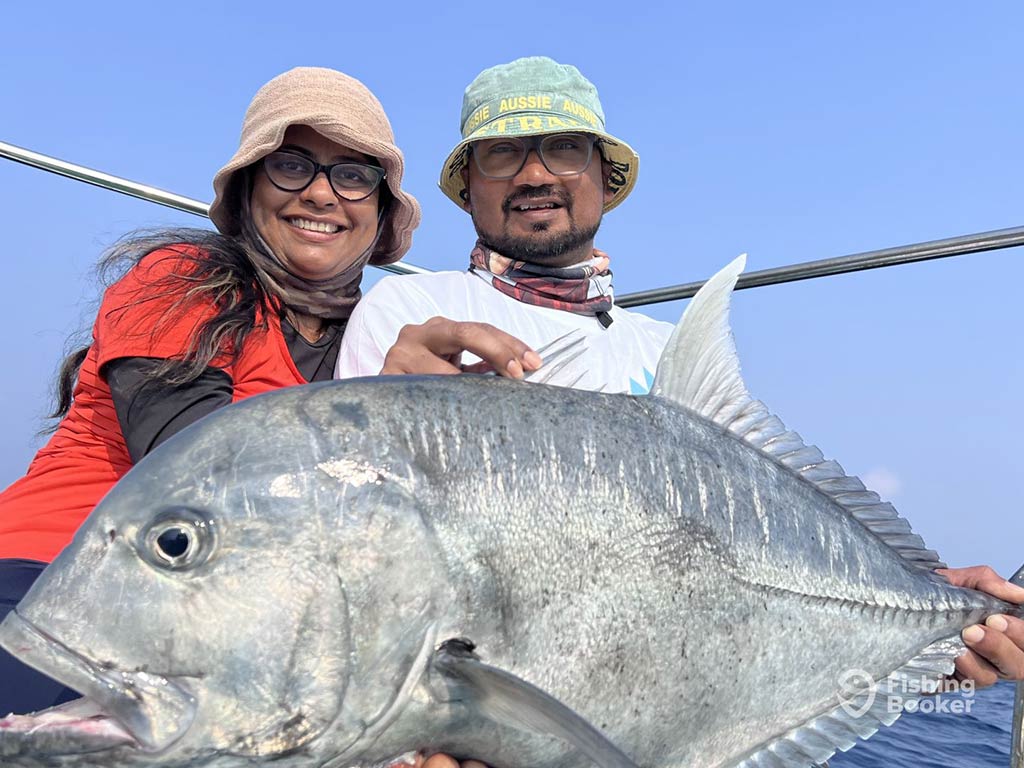
Photo courtesy of Bite Me Fishing Charters – Andaman
GTs are popular wherever they are. And India is no different. Promising a true test of an angler’s skill and tackle, GTs are the perfect target for absolutely everyone. These fish are renowned for their strength and can reach sizes upwards of 90 pounds. The use of strong gear is a must not only due to their size but because of their aggressive strikes and powerful runs.
You’ll usually go after GTs by popping and jigging. Look for them on the rocky shores, coral atolls, and offshore drop-offs, especially around the Andaman Islands and Lakshadweep. Timing is less of a constraint with these fish as they can be caught year-round. However, the pre-monsoon months of April and May offer the best conditions. The relentless fight isn’t for the faint-hearted, however, but it guarantees a tale to tell upon returning to shore!
How to Go Fishing in India
While we’ve covered some of the most interesting species, the list of fish you could come across is endless. You can entice species as diverse as Billfish, Snapper, and Grouper, along with Tuna and Kingfish. And, no matter which species you’re after, you can blend traditional and modern techniques. Let’s dive deeper into the multitude of fishing types you can enjoy in India:
India Freshwater Fishing
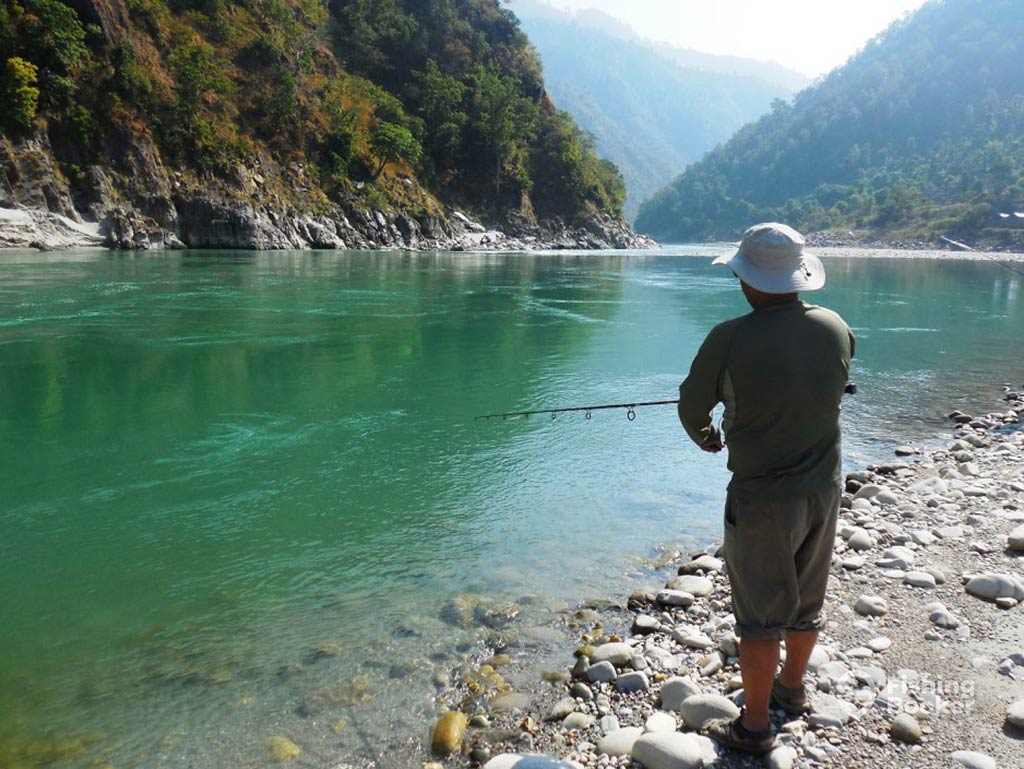
Photo courtesy of Pancheshwar Fishing
By combining the tranquility of fly fishing in the Himalayas with the excitement of river fishing across the Indian subcontinent, you get a perfect mix of diversity and challenge. There’s a complex network of rivers flowing from the mighty mountain range down to the lush southern plains.
River fishing here offers the chance to target species like Mahseer and Goonch – known locally as the Giant Devil Catfish. Fly fishing in the high-altitude Himalayas’ waters allows you to hook Trout in some of the most remote and picturesque locations in the world.
Rivers such as the Ganges and Kaveri, and their tributaries, offer exceptional settings for every freshwater enthusiast. In contrast, the colder streams of Himachal Pradesh and Uttarakhand are hotspots for fly fishing lovers.
India Deep Sea Fishing
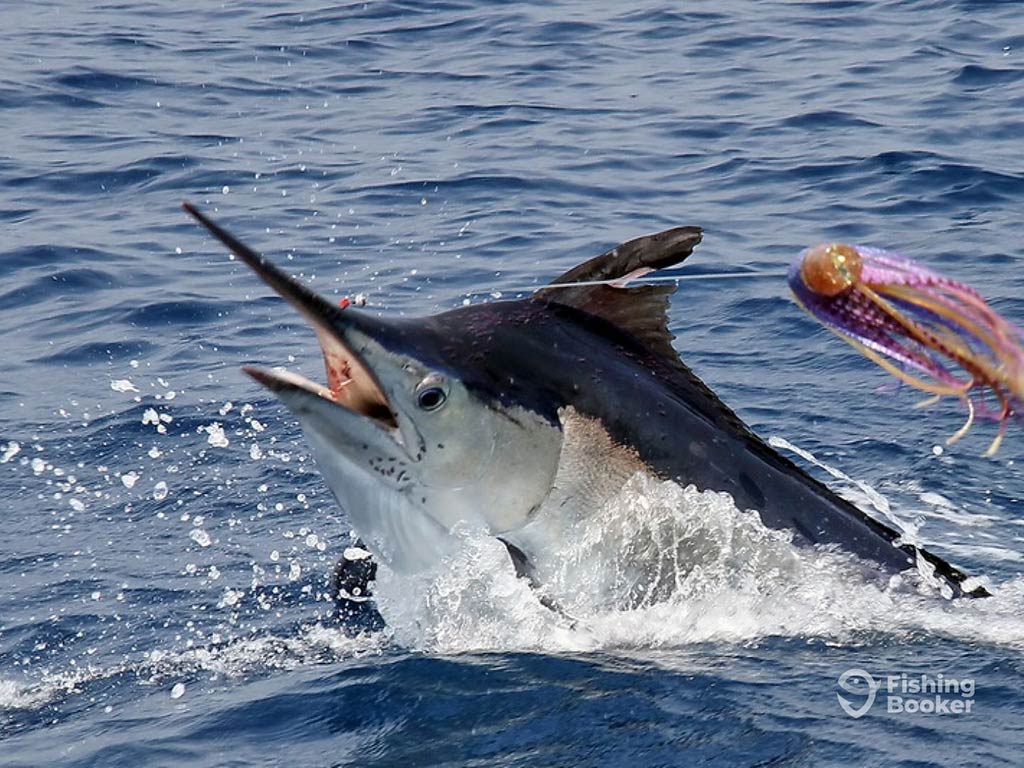
Photo courtesy of Blue Oceans Charters – Andaman
Big-game trophies is one of the reasons why deep sea fishing in India is so popular. The coastline stretches over 4,660 miles, making the local scene buzz with lots of potential. Marlin, Tuna, and Sailfish are all in the cards, depending on where you are.
Successful deep sea fishing in India combines local knowledge with the latest fishing technology and gear. Fishfinders, GPS, and modern trolling techniques increase the odds of landing something nice. Plus, knowledge of migratory patterns and sea conditions also plays a crucial role.
India’s continental shelf and the drop-offs are hotspots for pelagic species. The waters off Goa, Kerala, and the Andaman Islands are especially well-known for their deep-sea fishing potential.
Ice Fishing in India’s North
In the colder months, the northern parts of India, especially the high-altitude regions of Ladakh and Kashmir, become the stage for ice fishing. Frozen lakes such as Pangong Tso in Ladakh transform into icy playgrounds for anglers looking for Trout and other cold-water species.
The lakes in these regions are not only picturesque but also demanding, with anglers needing to be prepared for harsh conditions. Ice fishing requires a special set of skills and equipment, including augers for drilling holes, tip-ups, and specialized rods. Come prepared or team up with an experienced local.
India Charter Fishing

Photo courtesy of Capt. Hook’s Sportfishing – “Snapper”
Booking a fishing charter in India allows you to fish with the locals and like the locals. No one knows the waters better than an experienced guide. Charter fishing trips can be tailored to your specific needs, whether that’s cruising the backwaters for Catfish and Carp, or heading out into the sea for Tuna and Kingfish. These trips offer not just guidance but also the advantage of a local captain’s expertise.
From luxury yachts to kayaks, charters range in amenities and price. This flexibility ensures that everyone from the novice to the experienced angler can find a charter that suits them well. The Goan coast, the Konkan coast of Maharashtra, and the entire eastern coastline offer some of the best charter fishing opportunities.
India Traditional Fishing Methods
Across the coastlines, rivers, and backwaters of India, traditional fishing methods such as using cast nets, traps, and bamboo poles offer a glimpse into the Indian way of life. For instance, in the backwaters of Kerala, “Chinese fishing nets” present an iconic image of fishing ingenuity. In the fast currents of central India, locals commonly use basket traps.
Fishing villages along the coast of Goa, the deltas of West Bengal, and the shores of the Andaman Islands are some of the spots where these methods are most visible. With modernization, there’s a growing movement to preserve these ancient practices to ensure they continue to be a part of India’s living angling heritage.
Where to Go Fishing in India
India’s diversity is unmatched by almost any other country. The country’s vastness offers everything from high-altitude Himalayan waters to deep trenches in the Indian Ocean. You have cold, clear rivers and warm ocean waters, where everyone can find their own piece of fishing heaven. We’ll only scratch the surface in this section but here are some spots to seek out:
The Northern Frontier and Himalayas
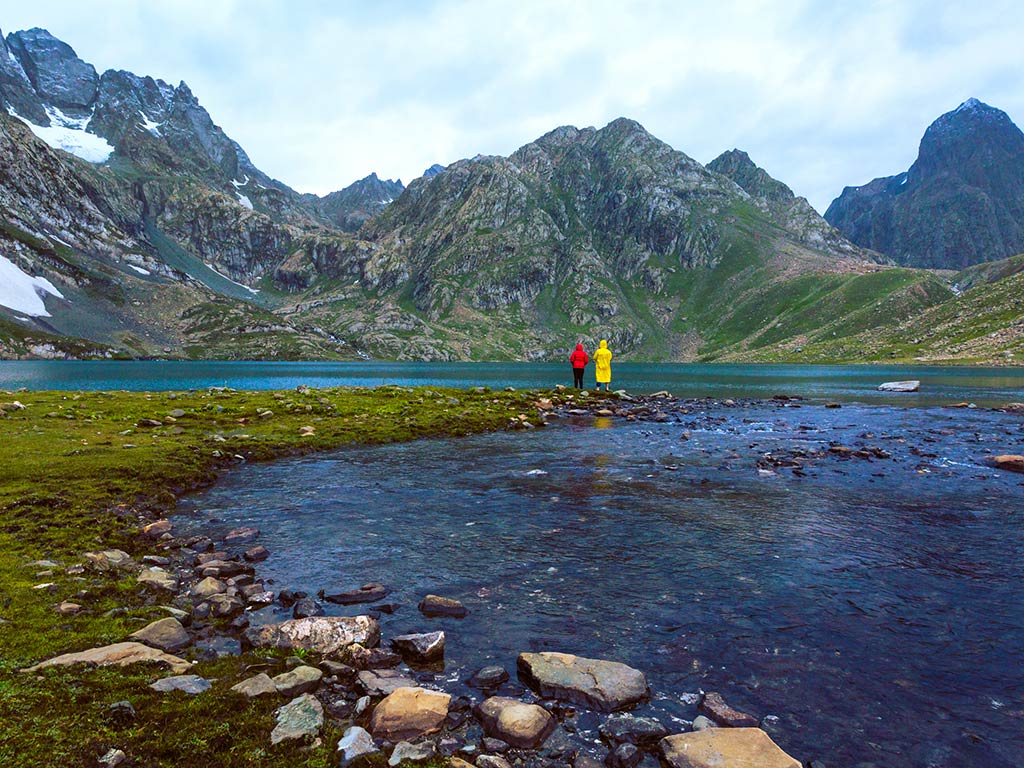
In the northern reaches of India, where the mountains almost touch the sky, the Tirthan Valley in Himachal Pradesh is a true angling paradise. Here, the waters are filled with Brown and Rainbow Trout.
The experience seamlessly weaves into the Jim Corbett National Park, where the Ramganga River hides good numbers of Mahseer. This blend of wilderness and water sports is rivaled by the Sindhu River in Ladakh, where the cold desert meets icy rivers, and indigenous species thrive in the shadow of the Himalayas.
The West Coast
The western coastline contrasts from calm beaches to the Konkan cliffs. In Goa, the Arabian Sea hides a healthy population of Snapper, Barramundi, and Kingfish. Northward, you have the beautiful Konkan Coast. The rocky seabed here is a haven for Groupers and Barracudas, making the stretch from Maharashtra to Karnataka an exciting deep sea fishing destination.
Eastern India and the Andaman & Nicobar Islands
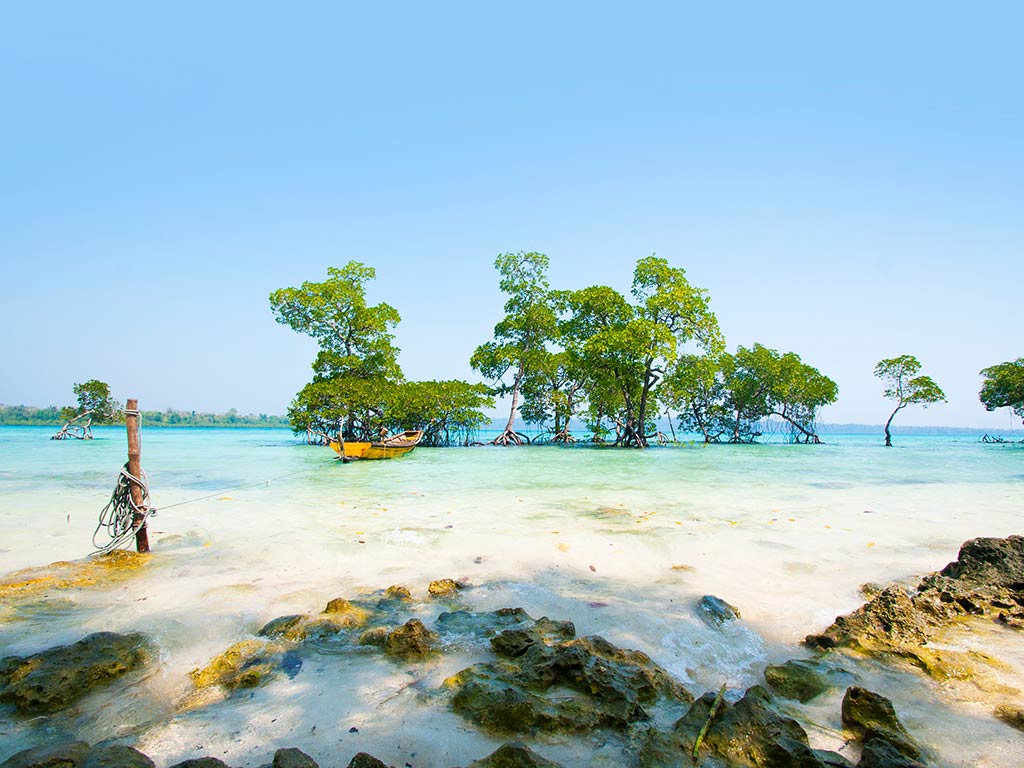
Eastern India’s waters and the Andaman and Nicobar Islands cater to novices and pros alike. Here’s a glimpse into some of the finest destinations in the area:
- Port Blair. The capital of Andaman is all about landing big-game species like Marlin and Sailfish. It has long cemented its reputation as a top-tier fishing destination with full-service charters available year-round.
- Havelock Island. Home to Giant Trevally, Havelock is also a paradise for those targeting Tuna with its crystal-clear waters and stunning corals.
- Neil Island. In addition to angling and spearfishing, Neil Island’s waters are abundant with Reef Sharks and Sea Bass, offering a diverse fishing experience.
- Rangat. This area’s untouched spots are ideal for those in search of Snappers and Groupers. It provides a serene atmosphere away from the typical tourist trails.
- Mayabunder. Nestled among the mangroves, Mayabunder’s creeks are the place to hook Barracuda and Mud Crabs. Traditional techniques are still in practice along with modern fishing methods, so come and get a real taste of India.
- Diglipur. With access to rare fishing grounds, Diglipur is the go-to for ambitious anglers chasing large pelagic species. It provides access to exclusive spots where Sailfish, Barracuda, and the occasional Wahoo are available offshore.
- Baratang Island. Baratang’s quiet fishing spots are perfect for those looking to escape the crowds and hunt for Mangrove Jack and Bream in its coves. Plus, you can immerse yourself in the impressive mud volcanoes and limestone caves.
- Nicobar Islands. Remote and rarely disturbed by fishing pressures, these islands are perfect for looking for Bonefish, Permit, and Green Jobfish.
Southern India’s Backwaters and Rivers
Southern India’s fishing scene is characterized by its laid-back charm. The Kaveri River, with its storied Mahseer, along with Karnataka and Tamil Nadu, all promise a prized catch. Down south, Kerala‘s backwaters are a complex network of canals and lagoons. Here, you can pursue the elusive Pearlspot among many other exciting species.
Central India and Inland
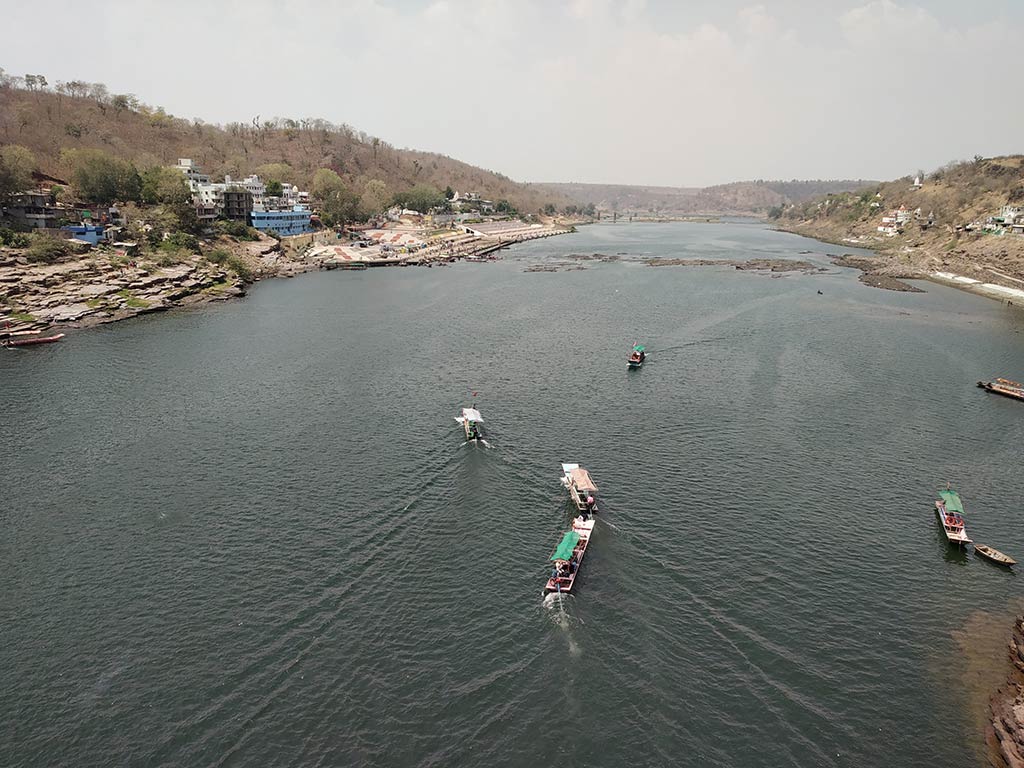
The heartland of India is home to numerous rivers and lakes rich in biodiversity. The Narmada River flows through Madhya Pradesh, offering you the chance to land Mahseer and Catfish. In the concrete jungle of Mumbai, Powai Lake stands as a surprising contrast, a tranquil spot for city dwellers hunting for Catfish and Carp.
India Fishing Seasons
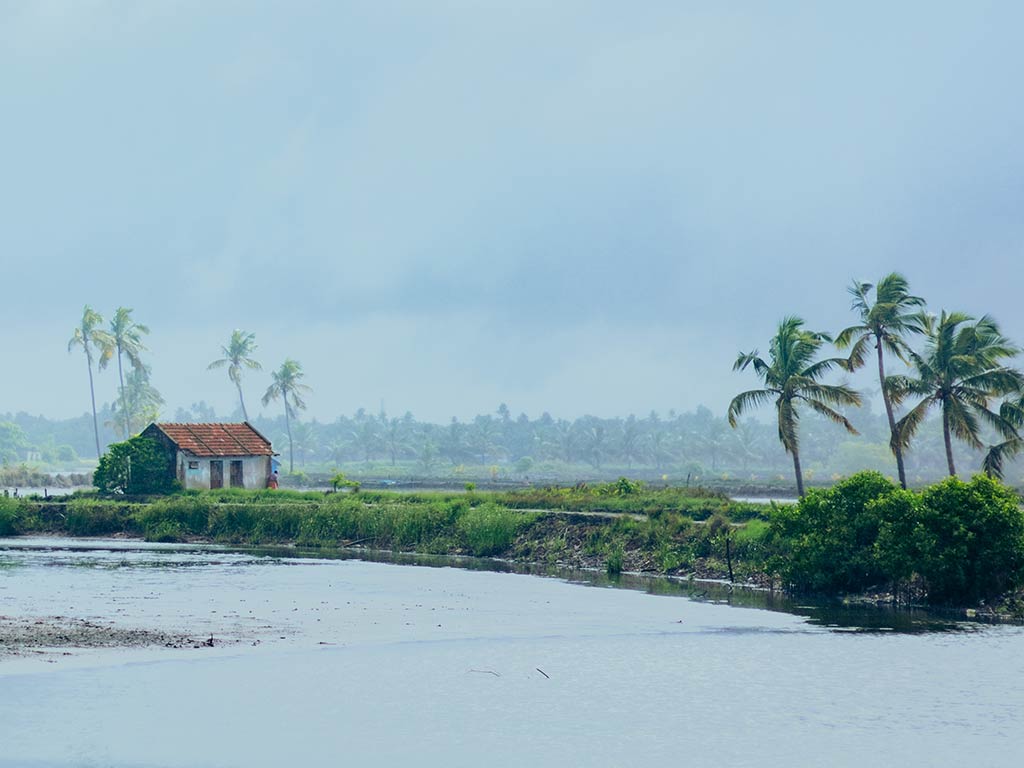
India’s fishing calendar is as varied as its geography. The peak season for freshwater fishing, especially in the northern rivers and lakes, aligns with the post-monsoon period. From late September to April, the cooler waters of the Himalayan foothills become a haven for Trout and Mahseer. The Tirthan Valley and the Ramganga River also come alive during this time.
The coastal regions play by different rules. Goa’s deep sea fishing season runs from October to May, when the sea is calm and clear. The Konkan Coast, mirroring Goa’s season, sees Groupers and Barracudas reeled in as the monsoon gives way to clearer skies and calmer seas.
The Andaman Islands have an almost mystical fishing availability throughout the year, but the best catches are often recorded from November to April. During this period, Marlin and GTs are more active. The surrounding waters of Neil Island and Rangat offer year-long fishing expeditions, with peak conditions for certain species like the Barramundi between May and August, just before the monsoon season hits.
In the south, the Kaveri is generous after the monsoons, offering larger Mahseer. The backwaters are more consistent, however, with local fishermen sharing fishing tales over a cup of chai year-round.
India Fishing Rules and Regulations

Fishing in India is governed by a number of rules and regulations. First of all, anglers are required to obtain a fishing license before heading out. The permits are typically issued by local offices of India’s Fisheries Department in respective municipal areas.
Fishing laws vary from state to state. Certain areas within national parks and protected reserves may have special regulations or complete bans. Research the local regulations of the area you intend to fish in, including fish size, bag limits, and restrictions on bait and tackle. Visiting the official website of the environment ministry and consulting with your guide is never a bad idea.
Fishing in India: From Himalayan Streams to Ocean Dreams
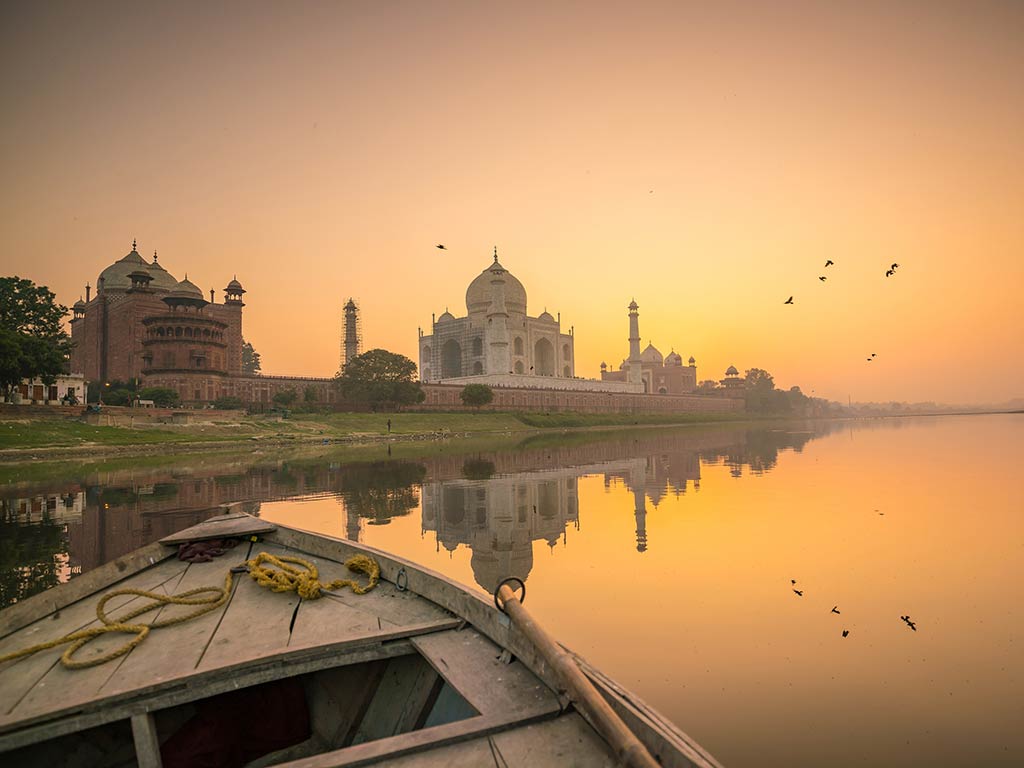
From the calm waters of the south to the untamed rivers of the north, fishing in India is truly something special – and don’t forget about the deep waters offshore! It’s about the stories you’ll create, the places you’ll discover, and the memories you’ll cherish. Don’t let the adventure of a lifetime slip away.
Have you ever been fishing in India? What’s your favorite part of the country to drop a line? Let’s chat in the comments below!
The post India Fishing: The Complete Guide appeared first on FishingBooker Blog.
https://fishingbooker.com/blog/india-fishing/
 CampingSurvivalistHuntingFishingExploringHikingPrivacy PolicyTerms And Conditions
CampingSurvivalistHuntingFishingExploringHikingPrivacy PolicyTerms And Conditions
